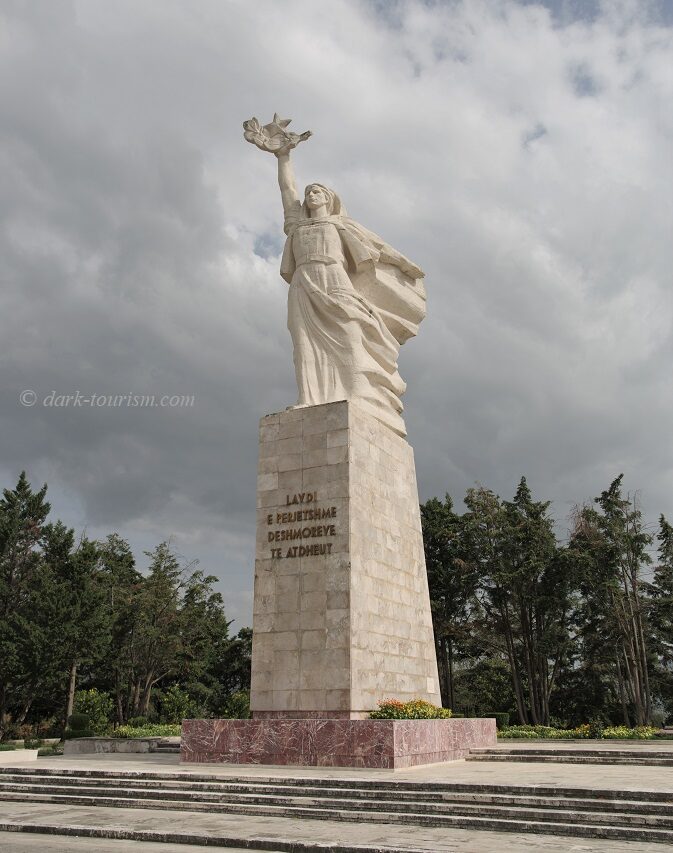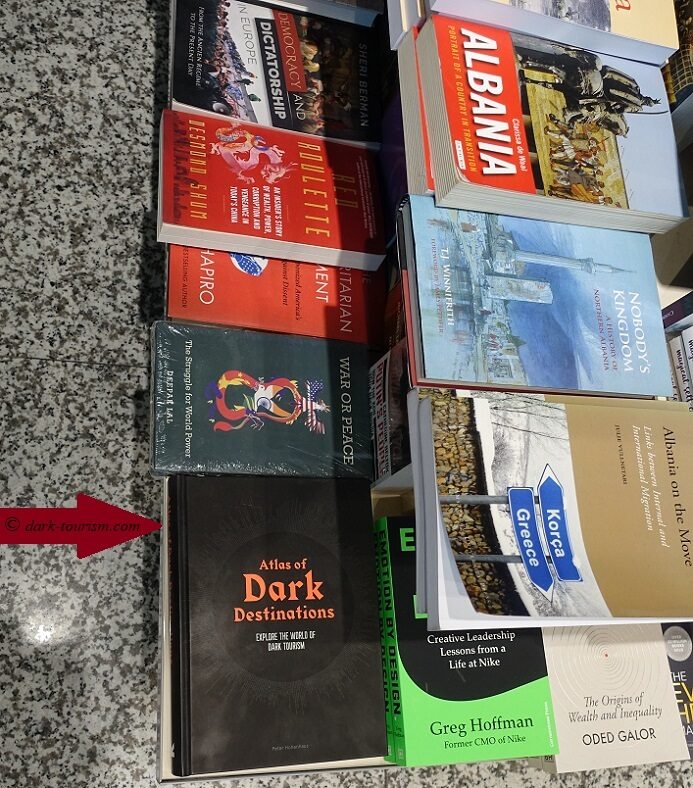| |
|
| ||
|
| |
Back from TiranaHello subscribers (and welcome new ones)! It’s been over three weeks since my previous Newsletter, but as I explained in that edition I was away travelling and for part of the time didn’t even have Internet access. First I spent a week in the UK, my first time back there since 2019, but that was entirely a family visit, as my wife hadn’t properly seen her folks since Christmas 2018. This visit now was also to make up for the planned trip last Xmas that we had to cancel at the last minute due to the outbreak of the Omicron variant. Now Britain seems to have all but forgotten that there ever was a pandemic. In shops and at the airport we were typically the only ones wearing masks. And that’s despite the fact that the figures actually remain rather high in the UK. But never mind. It was nice to see life having returned, seemingly, to “normal”. And this Monday I returned from a six-day visit to Albania, which was my first proper dark-tourism-focused trip since August last year. And I’ve just uploaded a new Blog Post about that trip. I was based in the capital Tirana but also went on a day trip out of the city, namely to the former political prison of Spaç. Otherwise I finally had a chance to check out a few new dark attractions that have opened since my last visit to Tirana in 2011. Back then, the dark past of Albania’s communist dictatorship under Enver Hoxha, who ruled the isolated country with an iron fist for over 40 years, was barely acknowledged. The National History Museum didn’t even have a section for the period after WWII. This has all changed, not only does the museum now cover Albania's modern history as well (albeit not very well), the city’s top attractions on Tripadvisor now fall firmly within the realm of DT and are about those dictatorship years and the paranoia and surveillance they were characterized by. The most significant new additions are the two BUNK’ART sites inside former Cold-War-era bunkers, along with the former HQ of the once feared secret police, the Sigurimi. The legendary Hoxha “Pyramid” (once a museum about the dictator for a few years until the collapse of communism), which had stood derelict and unused for decades, is now a building site as it is undergoing a substantial redevelopment. At the same time the National Gallery of Art is closed too, also undergoing construction/refurbishing work. But I also managed to visit some other sites I hadn’t seen back in 2011, including the National Martyrs’ Cemetery with its flamboyant “Mother Albania” statue, pictured in the featured photo above, as well as the humble grave of Enver Hoxha to which his remains were banished after being exhumed from his original grave next to Mother Albania following the collapse of communism in 1991. Read my short report with photos in the latest Blog Post to get an idea where Tirana stands in 2022. It is bound to change more, though. In fact I’ve never seen so many skyscrapers under construction in such proximity to each other! The skyline of the city has already changed dramatically and will continue to do so. I guess in a few years time it will warrant another return trip, as does Albania as such. Right at the end of the trip I was in for a pleasant surprise: at Tirana international airport’s departure hall is a book shop and on a shelf, amongst various volumes about modern history and politics, I spotted my own book Atlas of Dark Destinations! |
|
|
| |
It was the first time I encountered my book physically in an actual shop! That obviously felt really nice … But so much for this time. Best wishes, Peter |
|
| |
|
| |||
|

